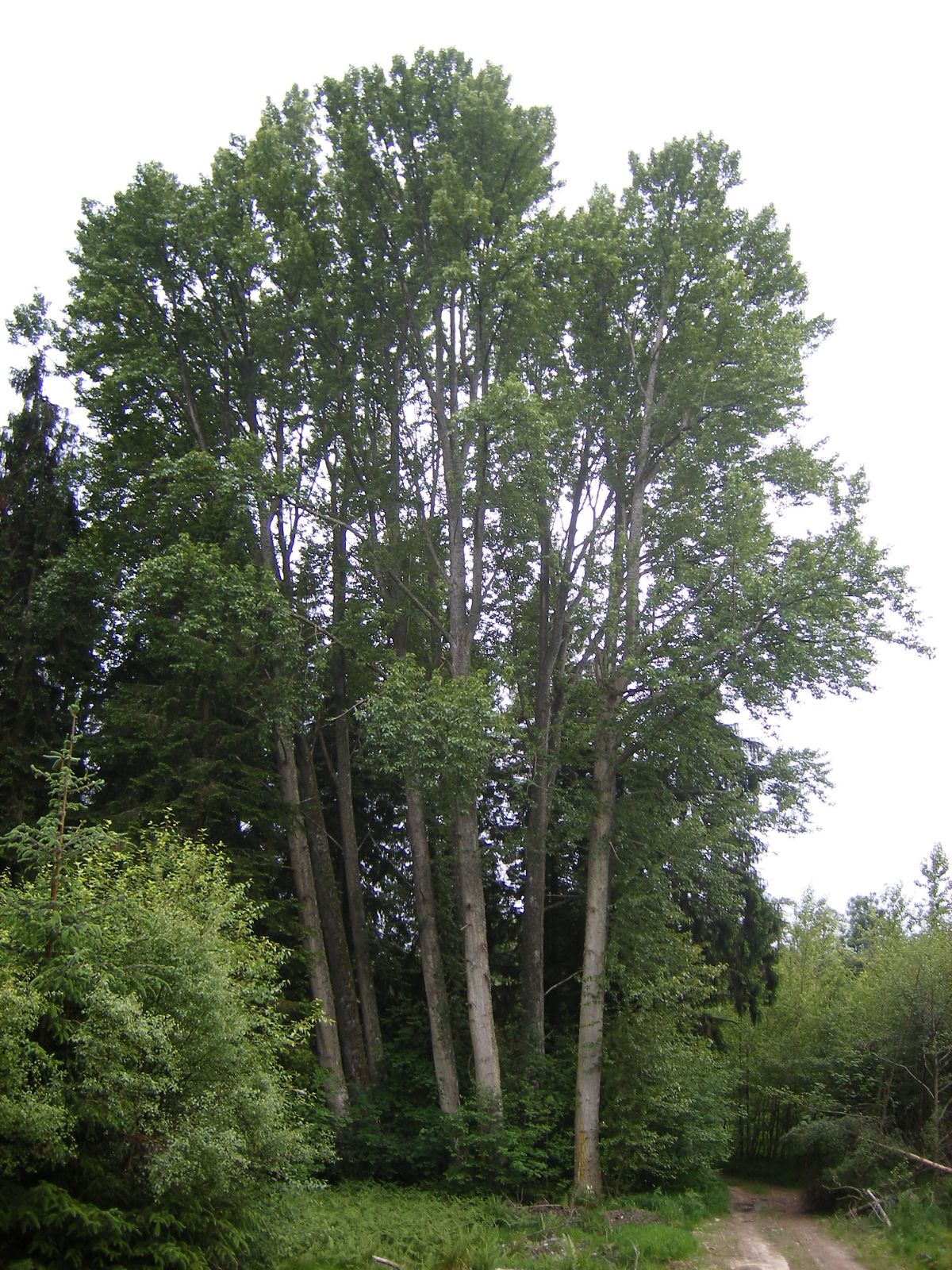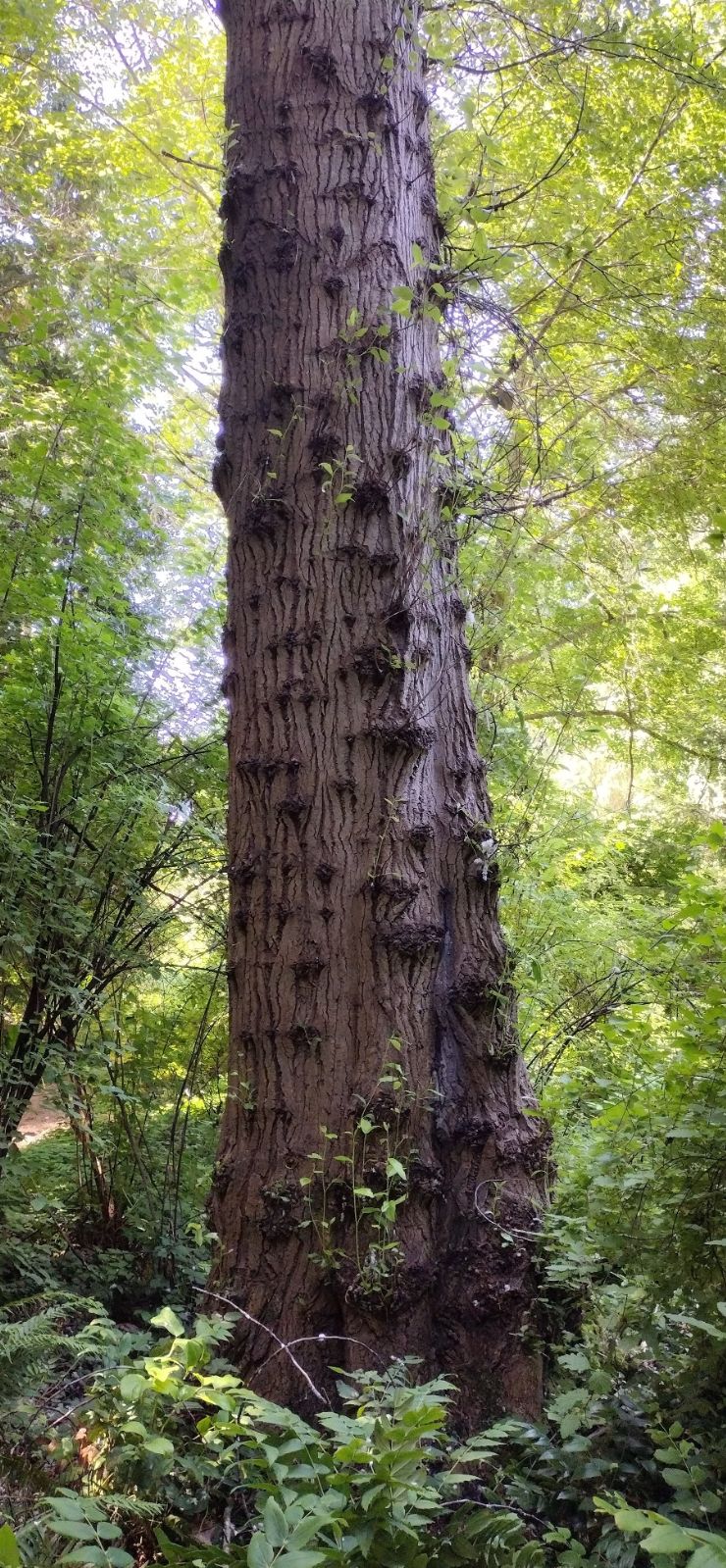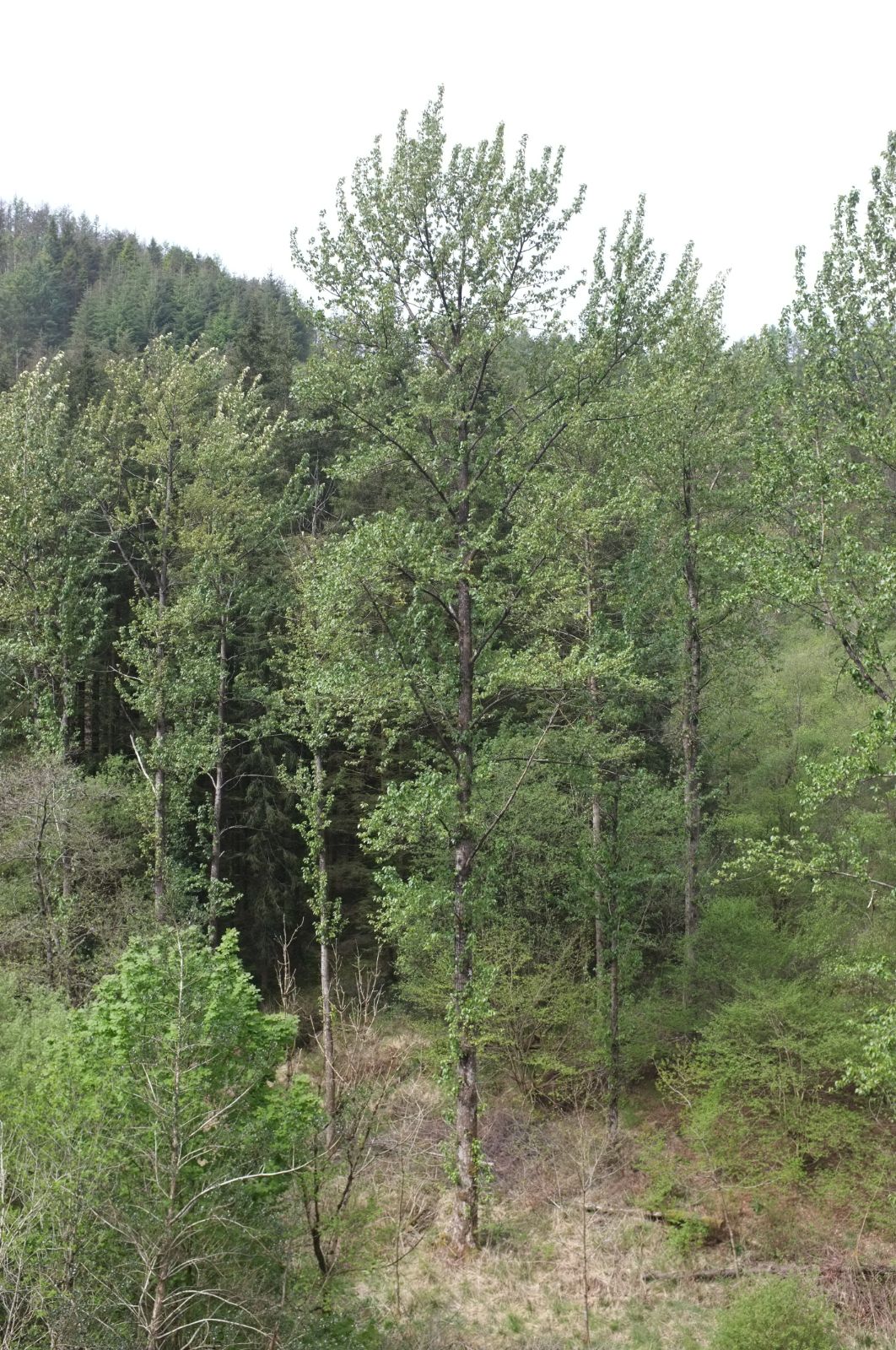Populus trichocarpa
Credits
Article from Bean's Trees and Shrubs Hardy in the British Isles
Recommended citation
'Populus trichocarpa' from the website Trees and Shrubs Online (treesandshrubsonline.
Genus
Common Names
- Black Cottonwood
Infraspecifics
Other taxa in genus
- Populus acuminata
- Populus adenopoda
- Populus alba
- Populus angulata
- Populus angustifolia
- Populus balsamifera
- Populus × berolinensis
- Populus × canadensis
- Populus candicans
- Populus canescens
- Populus ciliata
- Populus deltoides
- Populus fremontii
- Populus × generosa
- Populus glauca
- Populus grandidentata
- Populus heterophylla
- Populus koreana
- Populus lasiocarpa
- Populus laurifolia
- Populus maximowiczii
- Populus nigra
- Populus purdomii
- Populus sargentii
- Populus simonii
- Populus szechuanica
- Populus tremula
- Populus tremuloides
- Populus tristis
- Populus wilsonii
- Populus yunnanensis
A tree often (according to Sargent) 200 ft high in certain parts of its habitat; young trees marked by a slender, pyramidal habit, and by the ultimately smooth, yellow-grey bark; winter-buds coated with fragrant balsamic gum, brown and slender; young shoots slightly angled, furnished at first with a slight down, soon nearly or quite glabrous. Leaves ovate, slightly heart-shaped at the base or broadly wedge-shaped, slender-pointed, finely and shallowly toothed, very variable in size, as much as 8 or 10 in. long, and half as wide on very vigorous leading shoots, down to 2 in. long, and I in. wide on lateral twigs, dark lustrous green above, very white and conspicuously net-veined beneath, soon quite smooth on both surfaces; stalk 1 to 2 in. long. Male catkins 2 to 21⁄2 in. long; stamens numerous, mostly thirty to sixty. Female catkins up to 6 in. long; ovaries and capsules hairy, occasionally more or less glabrous; capsules three-valved.
Native of western N. America from S. Alaska to S. California, attaining its greatest size at low elevations in the valleys of British Columbia, Washington, and Oregon. It was first described as a species in 1852, from a specimen collected in Ventura Co., California, but was not introduced to Europe until the end of the century, probably from British Columbia. The type of the species had small, triangular-ovate leaves, somewhat broader than long, and hairy capsules. This variant is confined to California. The cultivated trees belong to the northern race, with larger leaves, longer than broad, and often nearly glabrous capsules. Strictly, this should be distinguished from the Californian type as var. hastata (Dode) Henry, though in practice it never is.
P. trichocarpa is undoubtedly the finest of the balsam poplars, if not of all poplars, and the quickest grower of the balsam species. The first tree to be planted at Kew, bought from Späth in 1896, became in thirteen years 55 ft high and about 4 ft in girth. Like so many species from the Pacific North-west, it is well adapted to our oceanic climate and grows well even where the summers are cooler than average and the soil more acid than is to the liking of most poplars. As the leaves unfold in spring they give off the same delicious fragrance as P. balsamifera, to which this species is closely allied. Unfortunately the clones of P. trichocarpa originally introduced to this country are very susceptible to bacterial canker, but resistant clones should be in commerce shortly (see below).
From the Supplement (Vol. V)
specimens: Syon House, London, in Wilderness, 121 × 81⁄4 ft (1982); University Botanic Garden, Cambridge, 90 × 103⁄4 ft (1984); Bowood, Wilts., 135 × 101⁄4 ft (1984); Stourhead, Wilts., 118 × 83⁄4 ft (1983); Colesbourne, Glos., 135 × 101⁄4 ft (1984); Kingscliff Wood, Som., pl. 1950, 112 × 6 ft (1978); Thorp Perrow, Bedale, Yorks., 110 × 61⁄2 ft (1981); Abbeyleix, Co. Laois, Eire, 118 × 83⁄4 ft (1985).
cv. ‘Fritzi Pauley’. – The tree at Alice Holt, planted 1953, measures 82 × 7 ft (1985). This clone is female, while ‘Scott Pauley’, also in the Alice Holt collection, is male; the tree there, planted at the same time, measures 85 × 6 ft (1985). Both were selected by Mr Pauley in Washington State. The specimen of ‘CF’ at Alice Holt, planted 1953, measures 82 × 71⁄2 ft (1985).
'Fritzi Pauley'
A fine clone of P. trichocarpa from Mt Baker, Washington, which has proved canker-resistant in the trials conducted by the Forestry Commission. Leaves dark green, very silvery beneath, up to 7 in. long, 3 in. or slightly more wide, evenly tapered to an acute point. The example at Alice Holt, pl. 1953, measures 80 × 5 ft (1973). Another good clone, which is slightly susceptible to canker, but hardly ever attacked, bears the provisional designation ‘CF’. This too has made a fine tree at Alice Holt; the specimen there, also planted in 1953, measures 72 × 5{1/4} ft (1973).



